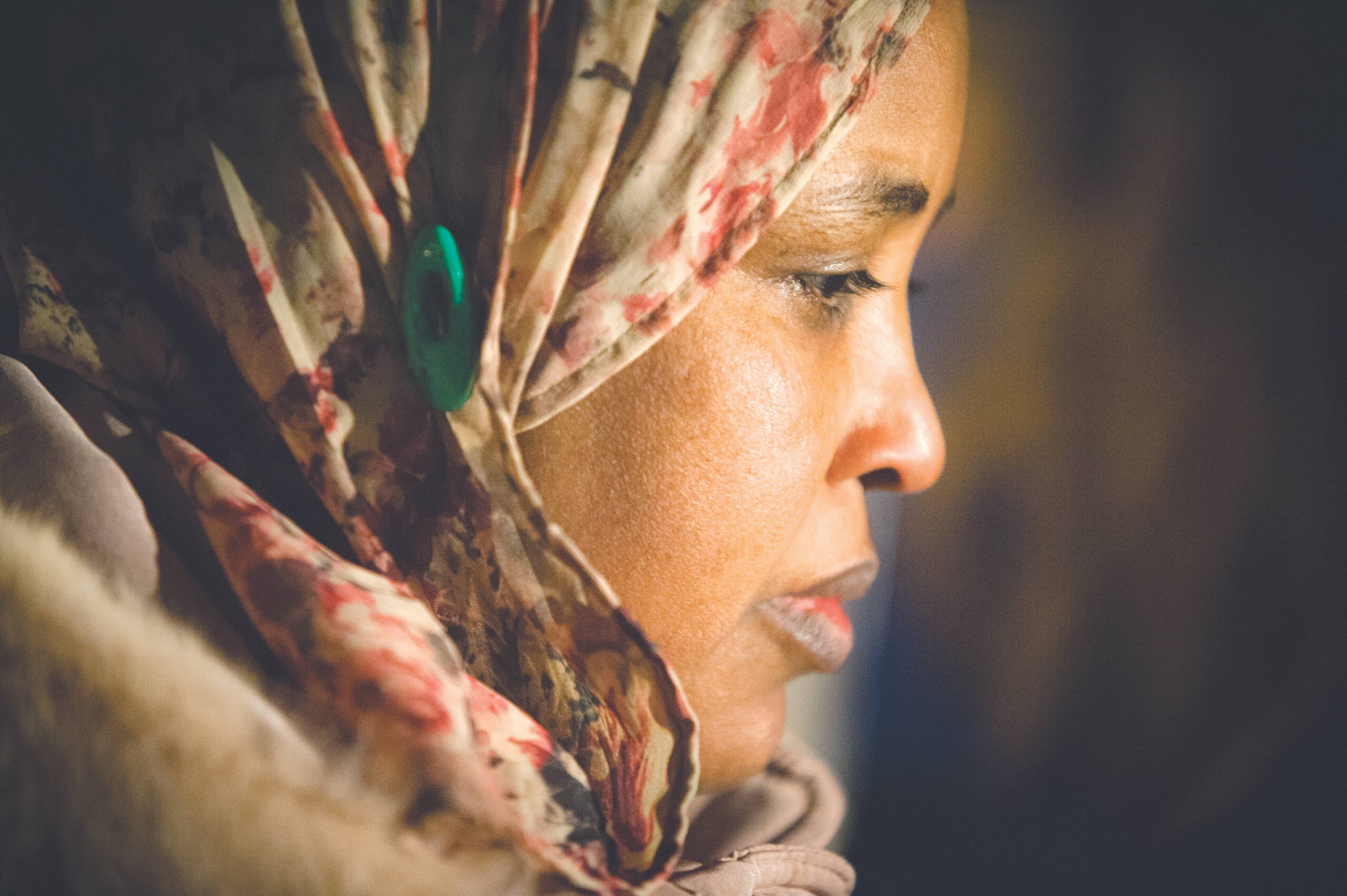Hibaq Gelle is desensitized to death. Last December, when the 25-year-old arrived at a women’s group meeting in west Toronto, the others told her the news: Musa Yusuf had been found stabbed to death in his apartment. His 22-year-old nephew was later charged with second-degree murder. Gelle says she didn’t get upset or angry. “I went home and told my mom, and she seemed surprised I didn’t know. It’s just constant grieving.”
Death and murder are no strangers to Gelle. Each time news breaks of a stabbing or shooting, she and her neighbours clench: Let it not be Somali. They dread what has become all too common, another name added to the long list of men from the community lost to violence. “So many other men I know . . . just murdered.”
You may unsubscribe from any of our newsletters at any time.
The oldest of four children, Gelle is a second-generation Canadian whose parents fled war-ravaged Somalia in the 1980s for a better life in Canada. They settled in the Toronto suburb of Etobicoke in an area dubbed Little Mogadishu, arguably the largest community of Somalis outside the African nation.
Growing up, Gelle rarely saw her mother, who worked three jobs and went to night school to put food on the table for her family. Graduating in 2012 with a degree in applied science, fitness and health promotion, Gelle is now employed as a support worker, helping newcomers to Canada, mostly Somalis, navigate social and immigration services.
Gelle is a rare case of success in a community plagued by violence — not only in Toronto, but right across Canada. Many fled civil war in Somalia only to replace warlords with drug lords on the streets of their Canadian neighbourhoods. More than 50 young Somali Canadian men have been murdered in Ontario and Alberta in the last decade, says Positive Change, a group of concerned Somali Canadians tackling youth violence in their community. Experts both inside and outside the Somali community say the root cause of the violence lies in the group’s struggle to integrate.
“I Am Canadian,” a 2013 study by the Institute for Research on Public Policy (IRPP), reports that “many young Somali Canadians encounter significant roadblocks that are not conducive to integration or social cohesion. These include systematic, institutional racism on the part of schools, by police and intelligence agencies, and the media.” Three decades after they began immigrating to this country, many Somalis live in poverty, in sub-par housing, and lack adequate education and well-paying jobs. Frustrated and disenchanted, some — too many, it would seem — fall into criminal behaviour and its associated violence.
The Somali Canadian population was all but non-existent until civil unrest broke out in the East African nation. Beginning in the 1980s, insurgents mobilized to force the military dictatorship of Siad Barre out of power. By 1991 they had succeeded, but the rush to claim power sparked a years-long civil war. As a result, an estimated 350,000 Somalis died of disease, starvation and violence. It was during this time that the first wave of Somali migrants began to arrive in Canada. Today, anywhere from 80,000 to 140,00 Somalis live in Toronto, and tens of thousands in Ottawa, Calgary and Edmonton. Another 3,000 live in Fort McMurray, Alta., drawn by oil sands jobs.
Though they came to Canada with high hopes for peace, security, a decent home and a good job, the reality is often far from their dreams. Migrants often lack the proper documents from their home country to satisfy the requirements for permanent residency in Canada. This has left many in limbo: without a permanent residency card, newcomers cannot access health-care coverage or become legally employed, and they may have difficulty finding a landlord willing to rent them a home. These problems — coupled with language barriers, illiteracy and being visible and religious minorities (nearly all Somalis are Muslim) — have led to a multitude of obstacles to integration. In some cases, immigrants also suffer from post-traumatic stress disorder.
The school dropout rate, according to the Toronto District School Board’s Somali Task Force, is about 25 percent for Somali Canadians, nearly double the board’s average — and even higher for Somali Canadian boys, at 33 percent.
Living in marginalized neighbourhoods carries real risk for children, boys in particular, who become criminalized in their quest for acceptance, according to the IRPP report. “Students are told at school that they’ll never make it in university, and police actively criminalize young Somali men,” Rima Berns-McGown, a University of Toronto professor and author of the IRPP report, told a writer for the U of T website. “You can create kids that are bitter, upset and disproportionately in the criminal justice system this way.”
Toronto’s ethnic Somalis, broadly speaking, have been unable to find an economic foothold. A 2000 report by York University’s Michael Ornstein, drawing from 1996 census data, showed that 63 percent of Toronto’s ethnic Somali families were living below the poverty line. A 2013 study from the Wellesley Institute found that only 33 percent of Toronto Somali respondents had full-time work.
The stories Gelle hears daily reflect the statistics and frustration with a system that isn’t doing enough to prepare newcomers for a successful life in Canada. One woman often comes to Gelle’s office just to cry. After her husband died in Somalia, she and her two boys moved to Canada in 1998. She hoped her sons would go to university and build a better future. Both struggled to integrate and are now in jail for violent crimes. “She’s resentful for coming here,” says Gelle.
In many ways, the Somali experience reflects the obstacles faced by most newcomers to the country. Immigrants with specific skills and training too often find their qualifications aren’t recognized in Canada. “Immigrants feel they were promised the moon, and they get here and it’s made of paper,” says Valerie Pruegger, director of the University of Calgary’s diversity, equity and protected disclosure office. Fast-tracking into their careers is difficult, she adds, if not nearly impossible.
“If you come over here with reasonable expectations, you might be able to put up with some of the issues,” Pruegger says. “But if you come with high expectations, it takes a toll on your psychological health.” The stress of adjusting to a new country, trying to find appropriate housing and being able to pay the bills creates a cycle in which immigrants are trapped in unstable jobs, she notes.
“Most people can’t find good-paying jobs,” says Gelle. When people like her mother are juggling two or three jobs to scrape by, it signals a system that works against immigrant communities, she adds, not for them. “We have the most educated taxi drivers in Toronto,” quips Gelle. “There are so many people who have degrees who are driving taxis and cleaning houses. There needs to be work done.”
Canadians value their country’s reputation as a place to escape inequality, violence and oppression. Indeed, many migrants are grateful to leave their home countries behind, says Debbie Douglas, executive director of the Ontario Council of Agencies Serving Immigrants. But they are counting on Canada to be “welcoming and open and a place where you can succeed. They are finding that this is not necessarily true.”
Drawing on 2006 census figures, a staggering report from the National Council of Welfare showed a poverty rate for racialized Canadians of 22 percent, more than double that of white Canadians. Overall, racialized people had a median income in 2005 that was 30 percent lower than non-racialized people ($19,100 versus $27,100). And a 2008 study found that Canadian-born visible minorities experienced a rate of crime almost double that of non-visible minorities. This may have something to do with the fact that 32 percent of those living in poverty in Canada are visible minorities, according to the NCW report.
While the immigration system has been tinkered with during the life of the current government, the larger question of how this all connects hasn’t been asked, says Chris Friesen, director of settlement services for the Immigrant Services Society of British Columbia. “The future of this country is increasingly going to rely on the policy lever of immigration,” he says. “We need to come together to figure out exactly what is happening and what immigration system we want in the future.” He and others believe a comprehensive discussion needs to take place, such as a Royal Commission on immigration. Otherwise, he says, the inability of today’s immigrants to fully contribute to society will ultimately damage Canada’s prosperity and success.
Members of the Somali Canadian community are also working to overcome their problems. Faduma Arab and Habiba Adan, both of whom lost sons to gun violence, founded Positive Change in 2012 to stop Somali men from gravitating toward gangs. The organization has set its sights on the upper echelons of power: the decision-makers in schools, at police headquarters and in every level of government. Bolstered by support from both inside and outside the Somali community, Positive Change is helping young Somali men become contributing, successful community members. “We need to do better as a society and stand up for the oppressed and the marginalized,” says Gelle. “We need to create less barriers in all areas of society and be more inclusive and supportive.”
***
This story first appeared in The United Church Observer’s May 2015 issue with the title “Broken dreams in Little Mogadishu.”














